Hyunggon Park
Learning to Activate Relay Nodes: Deep Reinforcement Learning Approach
Nov 24, 2018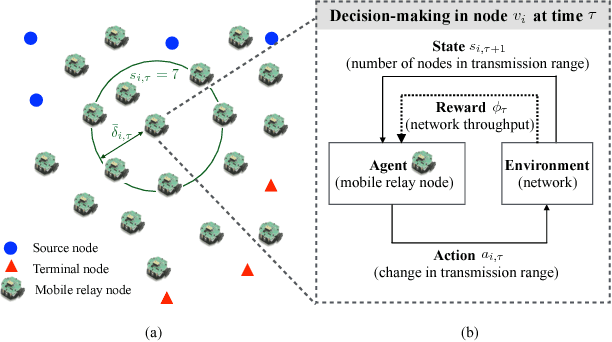
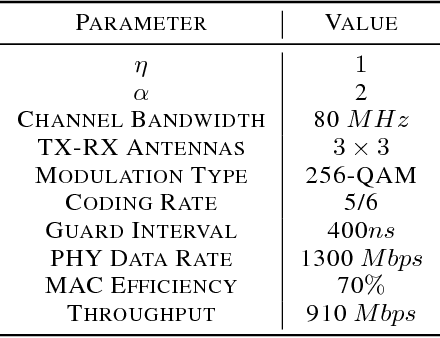
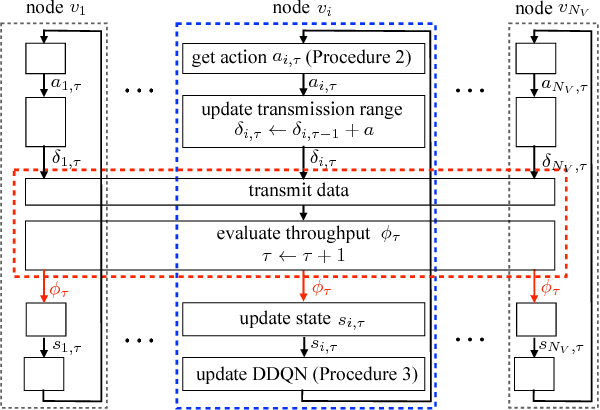
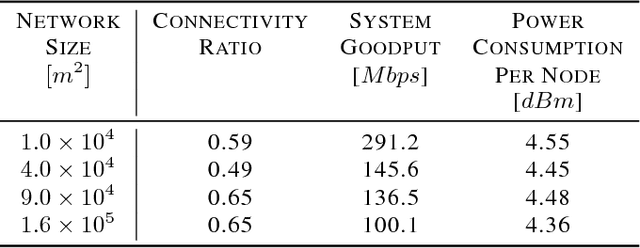
Abstract:In this paper, we propose a distributed solution to design a multi-hop ad hoc network where mobile relay nodes strategically determine their wireless transmission ranges based on a deep reinforcement learning approach. We consider scenarios where only a limited networking infrastructure is available but a large number of wireless mobile relay nodes are deployed in building a multi-hop ad hoc network to deliver source data to the destination. A mobile relay node is considered as a decision-making agent that strategically determines its transmission range in a way that maximizes network throughput while minimizing the corresponding transmission power consumption. Each relay node collects information from its partial observations and learns its environment through a sequence of experiences. Hence, the proposed solution requires only a minimal amount of information from the system. We show that the actions that the relay nodes take from its policy are determined as to activate or inactivate its transmission, i.e., only necessary relay nodes are activated with the maximum transmit power, and nonessential nodes are deactivated to minimize power consumption. Using extensive experiments, we confirm that the proposed solution builds a network with higher network performance than current state-of-the-art solutions in terms of system goodput and connectivity ratio.
Network Coding Based Evolutionary Network Formation for Dynamic Wireless Networks
Aug 16, 2018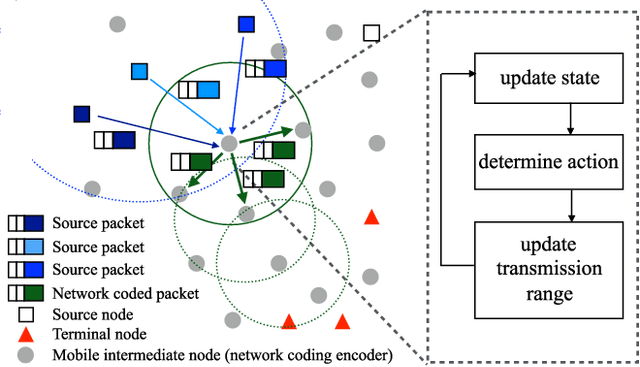

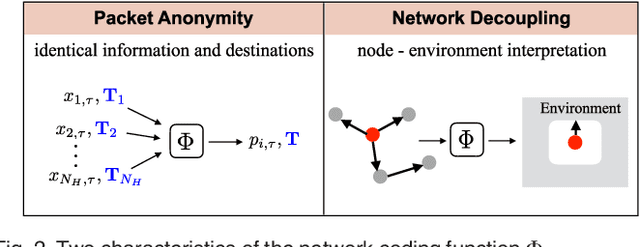

Abstract:In this paper, we aim to find a robust network formation strategy that can adaptively evolve the network topology against network dynamics in a distributed manner. We consider a network coding deployed wireless ad hoc network where source nodes are connected to terminal nodes with the help of intermediate nodes. We show that mixing operations in network coding can induce packet anonymity that allows the inter-connections in a network to be decoupled. This enables each intermediate node to consider complex network inter-connections as a node-environment interaction such that the Markov decision process (MDP) can be employed at each intermediate node. The optimal policy that can be obtained by solving the MDP provides each node with optimal amount of changes in transmission range given network dynamics (e.g., the number of nodes in the range and channel condition). Hence, the network can be adaptively and optimally evolved by responding to the network dynamics. The proposed strategy is used to maximize long-term utility, which is achieved by considering both current network conditions and future network dynamics. We define the utility of an action to include network throughput gain and the cost of transmission power. We show that the resulting network of the proposed strategy eventually converges to stationary networks, which maintain the states of the nodes. Moreover, we propose to determine initial transmission ranges and initial network topology that can expedite the convergence of the proposed algorithm. Our simulation results confirm that the proposed strategy builds a network which adaptively changes its topology in the presence of network dynamics. Moreover, the proposed strategy outperforms existing strategies in terms of system goodput and successful connectivity ratio.
 Add to Chrome
Add to Chrome Add to Firefox
Add to Firefox Add to Edge
Add to Edge